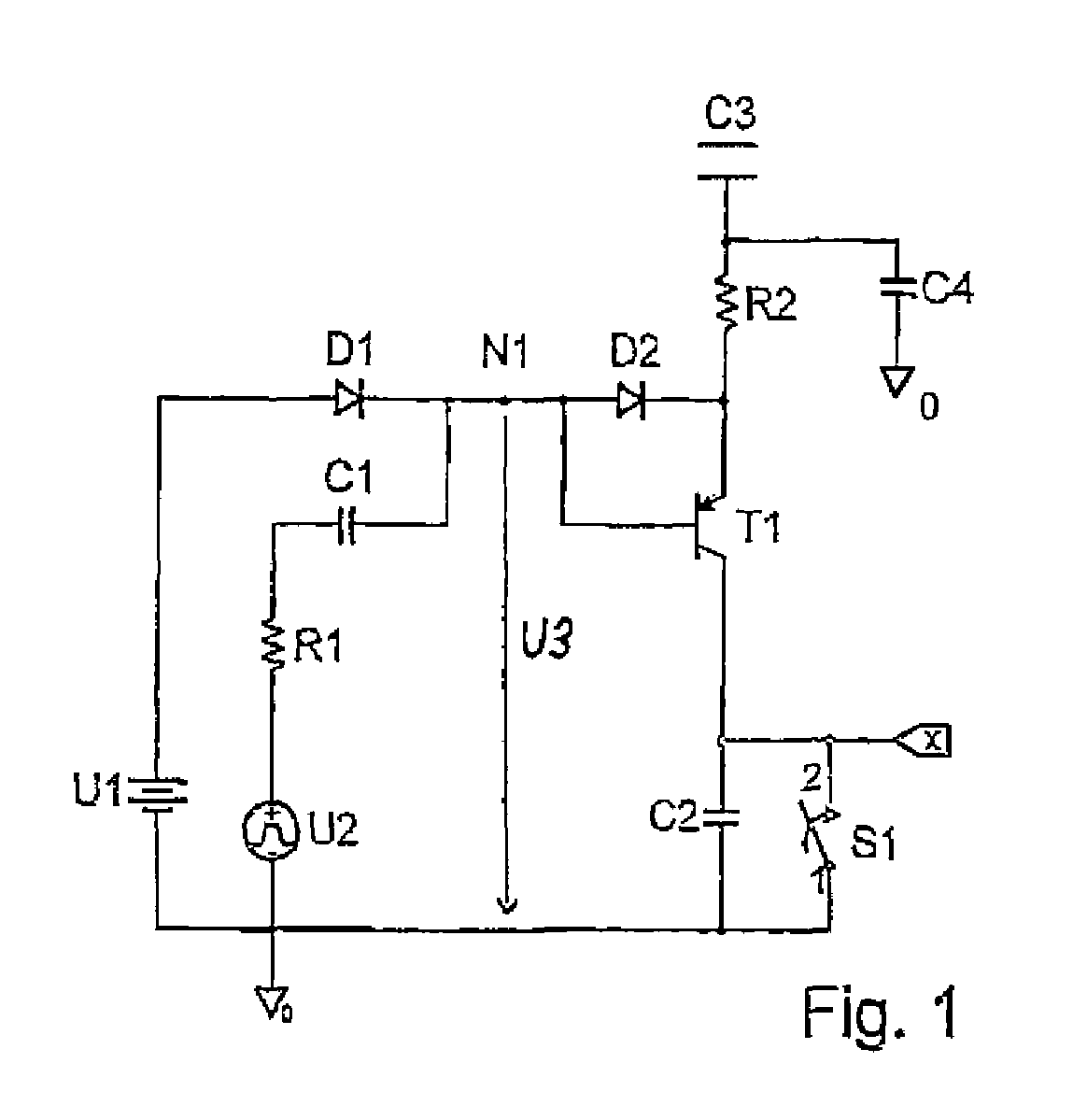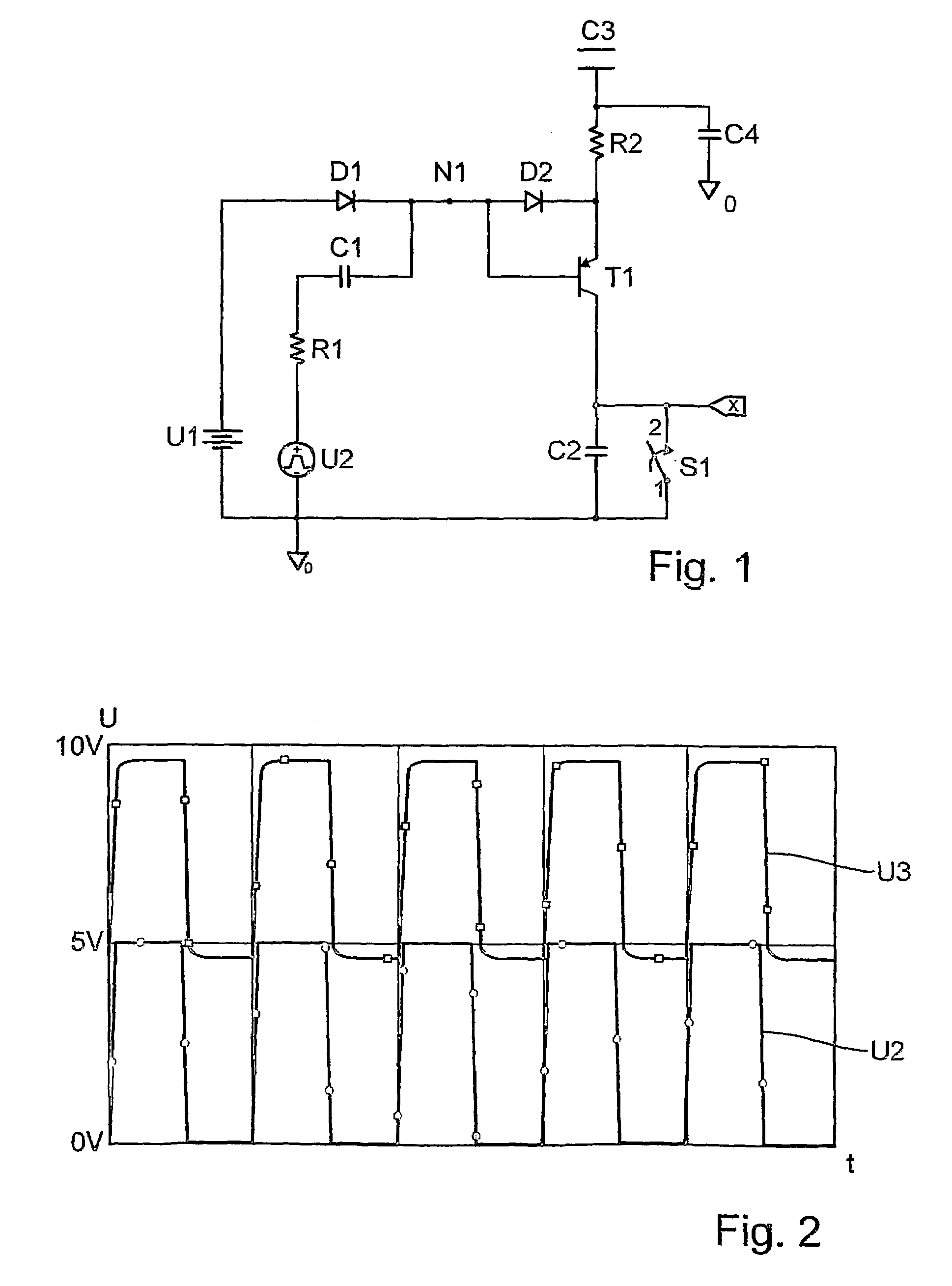Circuit arrangement for a capacitive proximity switch
a capacitive proximity switch and circuit arrangement technology, applied in the direction of resistance/reactance/impedence, pulse technique, instruments, etc., can solve the problem that the switching process is normally implemented by analog switches, and the cost is relatively high
- Summary
- Abstract
- Description
- Claims
- Application Information
AI Technical Summary
Benefits of technology
Problems solved by technology
Method used
Image
Examples
Embodiment Construction
[0020]FIG. 1 is a diagram of a circuit arrangement for capacitive proximity switches for the determination of their operating state. The circuit arrangement comprises a DC voltage source U1 and a square-wave voltage source U2 with a common reference potential, for example earth, and between the charging voltage node N1 to which a charging voltage is applied and the DC voltage source U1 is looped a clamping diode 1 in the non-conducting direction and between the charging voltage node N1 and square-wave voltage source U1 are looped in a capacitor C1 and a resistor 1 in series. In conjunction with the capacitor C1, the clamping diode D1 brings about a raising of the voltage at node N1 outputted by the square-wave voltage source U1 by the amount of the voltage of said source. FIG. 2 shows this in a graph of the voltage curve of the AC voltage source U2 and the charging voltage U3 at the charging voltage node N1 over time.
[0021]There is also a first switching means in the form of a diode...
PUM
 Login to View More
Login to View More Abstract
Description
Claims
Application Information
 Login to View More
Login to View More - R&D
- Intellectual Property
- Life Sciences
- Materials
- Tech Scout
- Unparalleled Data Quality
- Higher Quality Content
- 60% Fewer Hallucinations
Browse by: Latest US Patents, China's latest patents, Technical Efficacy Thesaurus, Application Domain, Technology Topic, Popular Technical Reports.
© 2025 PatSnap. All rights reserved.Legal|Privacy policy|Modern Slavery Act Transparency Statement|Sitemap|About US| Contact US: help@patsnap.com



